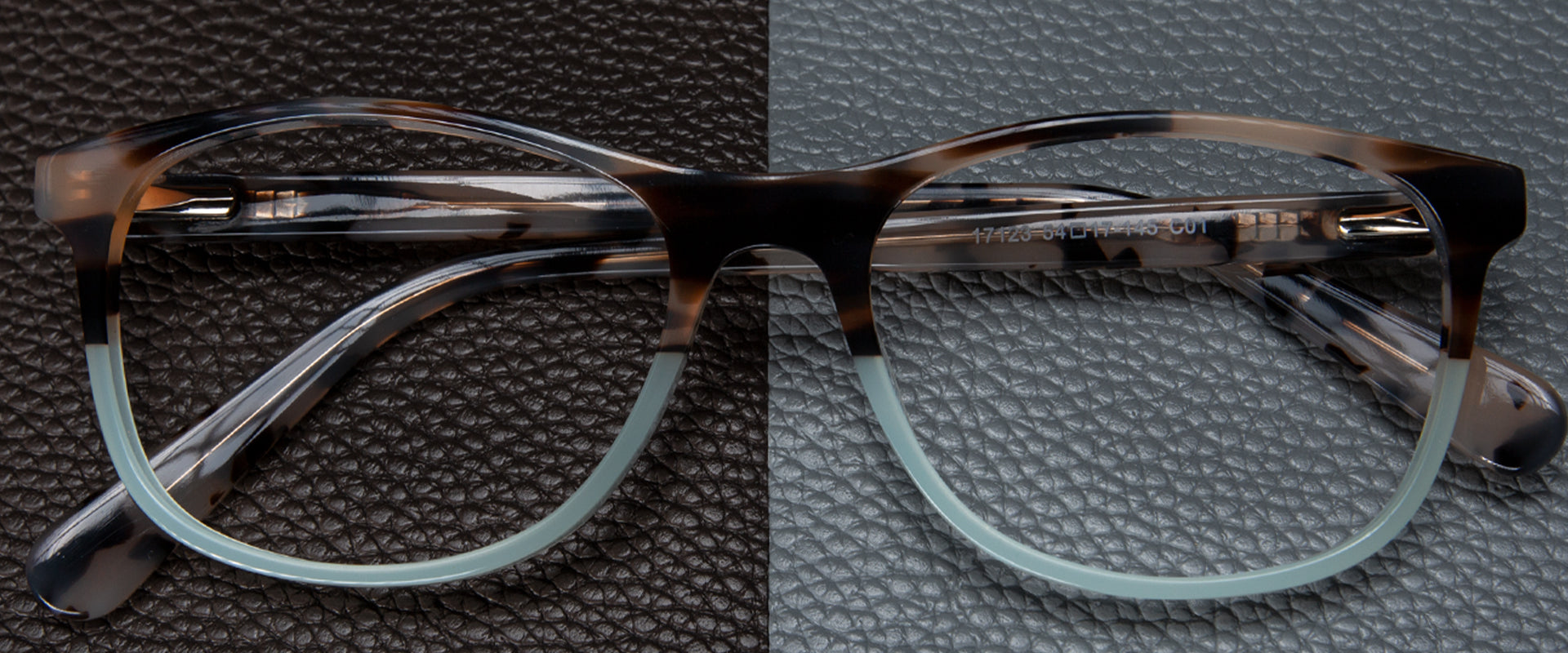Blog - Prescription Glasses Online

Are you trying to figure out the most reputable store to buy the best prescription glasses online? Relax because at HipOptical, we’ve got you covered. We all know the important role that our eyes play in our day-to-day life. Therefore, nothing should be left to chance when it comes to eye care.
We believe that eyewear should not only be affordable but also of high quality. All our prescription lenses and frames are made in the USA from high quality materials to guarantee value for money.
We have different varieties of eyeglasses in our catalogue to cater for different tastes and preferences of men, women, and kids. No matter how distinctive your prescription is, we shall customize your eyeglasses to the finer details to ensure that you get a unique striking style that befits your status.
At Hipoptical, we strive to provide you with the best prescription glasses online services that are unmatched and customer focused. We have an easy to navigate website to enable you to sort our vast list of eyeglasses based on style, color, shape, price, and gender.
What Is An Eyeglass Prescription?
An eyeglass prescription refers to an order written by a professional eyewear expert such as an ophthalmologist or optometrist.
It gives precise specifications of all parameters that the prescriber has examined and has deemed necessary to help in designing corrective lenses for a particular patient.
Some of the key parameters indicated on prescription glasses include; patient’s name, lens power, the pupillary distance, type of prism and prescriber’s signature.
After you have been given your eyeglass prescription, the dispensing optician will analyze the written prescription and design the recommended lenses and frames and sell it to the patient.
The term “Single Vision” is used to describe the type of lenses. Single vision eyeglasses are the most prevalent prescription glasses and have lenses which offer only one type of vision correction.
They are designed to help patients who struggle with short-sightedness or long-sightedness. Therefore, single vision lenses work for patients who are short-sighted or long-sighted but cannot work for patients with both conditions.
Single vision eyeglasses are also used by individuals with astigmatism to help them see a longer distance of up to 30 feet. They are also used by many individuals as an assistive device when either reading, driving or using a computer.
Common Types of Single Vision Lenses
Single vision lenses can be personalized with different types of coating options to suit the taste and preference of different groups of people. The most common types of single vision lenses include;
1.59 Polycarbonate Single Vision Lenses
Single vision lenses with 1.59 index are made from a high quality unique polycarbonate material. They are known for their long durability, impact and scratch resistance capabilities.
Polycarbonate single vision lenses in this index are also good in protecting your eyes from harmful UV rays.
1.57 Mid Index Single Vision Lenses
Single vision lenses with this index are designed particularly for people with stronger prescriptions. The easiest way of identifying them is their thin size and lightweight nature. All 1.57 mid index lenses are suitable for people with SPH prescription corrections of between +/- 5.00 and +/-4.00.
Also, they can be used by individuals with CYL corrections of about +/-3.00 and less.
1.50 Polarized Single Vision Lenses
The 1.50 polarized single vision lenses are generally thicker in size than other models and they are ideal for patients with weaker prescriptions.
Single Vision Lenses Vs Bifocal Lenses
Single vision and bifocal lenses are different in terms of how they work to correct your sight at various distances. With single vision lenses, you are able to see clearer at a single distance.
On the other hand, bifocal lenses are designed with two sections to help you see near and far. Bifocal lenses are ideal for people who have both short-sightedness and long-sightedness.
In terms of pricing, bifocal lenses are a bit more expensive compared to single vision lenses.
How to measure Your Pupillary Distance (PD)
Before we show you how to measure your Pupillary Distance, it’s important that we understand what PD means. Pupillary Distance (PD) measures the distance between the centers of your pupils.
Measuring your Pupillary Distance is very important when buying prescription glasses online because it helps the dispensing optician determine where you look via the lens of your glasses. PD should be accurate as possible for better sight correction and improved patients’ experience.
In general, the average pupillary distance for an adult range between 54-74mm while those of kids should range between 43-58mm.
In most cases, an optometrist or ophthalmologist will measure your pupillary distance when you go for an eye care examination. In case you were not given PD measurements by your eye doctor, you can do it by yourself or with the help of a friend.
Here is a step by step guide on how to measure your own pupillary distance (PD).
Step 1: Start by having a clear mirror and a ruler
Step 2: Set the mirror at an ideal location and stand at a distance of 8 inches from the mirror
Step 3: Make your face straight and place your ruler in front against your blow
Step 4: Close your right eye and place your ruler zero mark at the center of your left pupil
Step 5: While standing straight and upright, now close your left eye and open your right eye
Step 6: Once you have opened your right eye, read the millimeters (mm) that are exactly at the center of your right pupil.
Step 7: Record that measurement because that is your pupillary distance (PD).
For better accuracy and consistency, always try and measure at least three times and compare to determine your correct pupillary distance. Also, ensure that your reading is within the average PD range of 54-74mm for adults and 43-58mm for children.
When a friend is measuring your PD, follow the following steps
Step 1: Keep both eyes open
Step 2: Let your friend put the zero mm mark on the ruler at the center of one of your pupil
Step 3: Let him/her stretch the ruler to the center of the other pupil and record the readings
Step 4: Now that is your PD and you can repeat it for 2-3 times for accuracy and consistency
For better results, ensure that you don’t look at the person measuring directly. Also, let them sit as you stand and try as much as possible to make your eyes still and focused on one point.
Now that you know your pupillary distance (PD), you only need to have eyeglass prescription from your eye doctor and enjoy unmatched prescription glasses online at Hipoptical. We will sort you with high quality and unique eyeglasses that are affordable and customized.
How to Read your Eyeglass Prescription
Have you just been given your eyeglass prescription and you can’t understand anything therein? Don’t mind because this is a common challenge to most patients and at HipOptical, we are here to help you make sense of those wordings and abbreviations.
There are various formats of eyeglass prescriptions but they all record similar parameters. Let’s look at the most common abbreviations on eyeglass prescriptions and define what they stand for.
OD & OS
These abbreviations stand for “Oculus Dexter” and “Oculus Sinister”. They are Latin words which are used to mean “Right Eye” and “Left Eye” respectively.
In recent times, there are some doctors who have opted to use modern abbreviations of RE for “Right Eye” and LE for “Left Eye”.
Therefore, if your eyeglass prescription contains those letters, know that they have the same meaning as OD & OS.
Sphere SPH
SPH measures the amount of lens power in diopters (D) prescribed to either correct short-sightedness or long-sightedness.
If your SPH is indicated with a minus (-), it shows that you are short-sighted and if it has a plus sign (+), it indicates that you are long-sighted.
Cylinder CYL
CYL shows the amount of lens power for patients with astigmatism. If your eyeglass prescription has this section as blank, then you may have very little astigmatism that doesn't require any correction or none at all.
Prism
The Prism section shows the amount of prismatic power and it’s measured in Prism Diopters (P.D). Alternatively, it’s also indicated as a superscript triangle mostly when it’s written freehand.
Axis
The term axis is used to describe lens meridians that have no cylinder power to correct astigmatism. It’s usually recorded with a number ranging from 1-180.
For instance, when the number reads 90, it should correspond to the vertical meridian of your eye while the 180 should tally to the horizontal meridian of your eye.
ADD
The ADD section indicates the added magnifying power that has been put to the bottom section of the multifocal lenses in order to correct presbyopia. It’s usually indicated with a plus sign (+) and it ranges from +0.75 to +3.00 D.
At HipOptical, we are a one stop shop for all your prescription glasses online needs and we are ready to serve you diligently. Contact us today for an outstanding experience.


